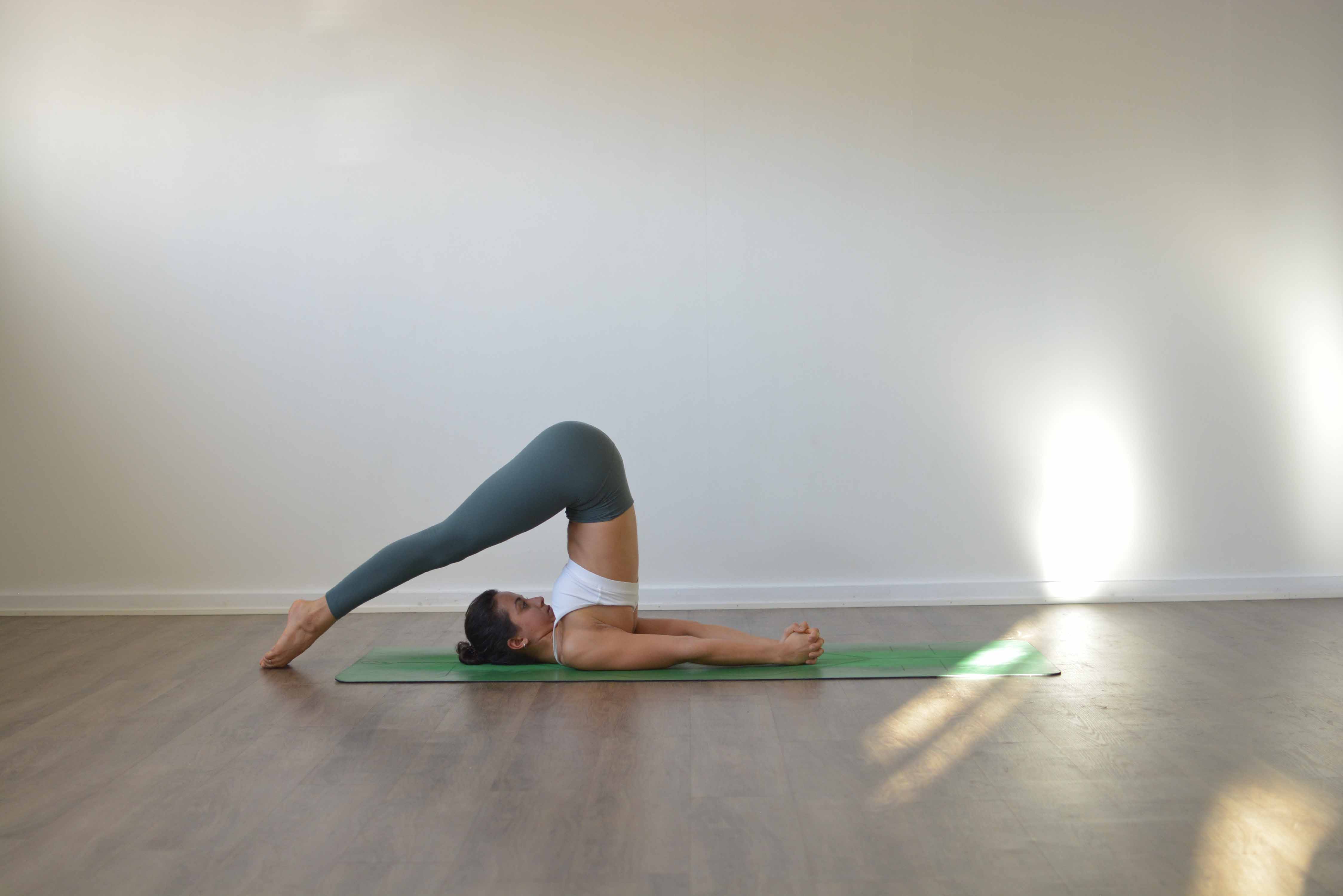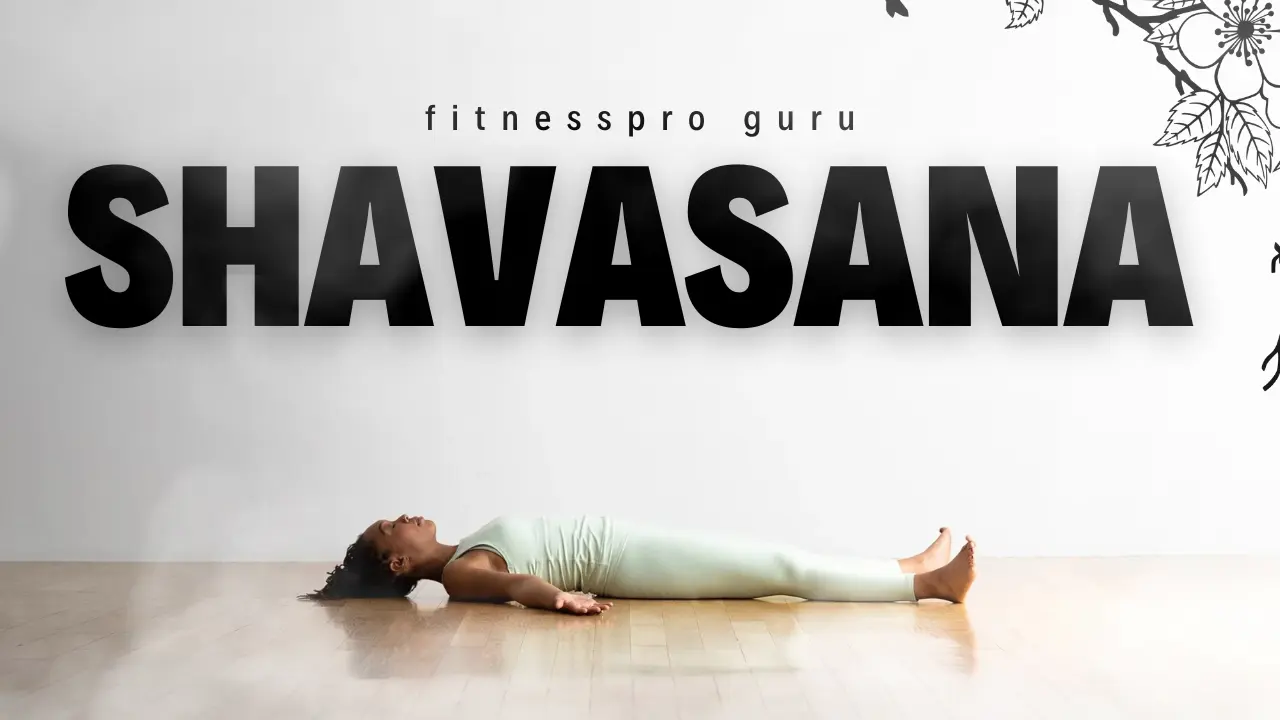
In the realm of yoga, Halasana, commonly known as Plow Pose, stands as a powerful and transformative asana. This intermediate to advanced level pose, which resembles the shape of a plow, offers a plethora of physical, mental, and spiritual benefits to practitioners. As a revered pose within Hatha and Ashtanga yoga sequences, Halasana requires dedication, patience, and a deep connection to one’s breath and body. Let’s explore the essence of Halasana and discover how this yoga posture can lead us to a state of tranquillity and rejuvenation.
“Discover the Benefits and Steps of Dhanurasana (Bow Pose) in Yoga”
Halasana step by step
Halasana, or Plow Pose, is a yoga asana that involves lying on your back and lifting your legs over your head to resemble the shape of a plow. It’s essential to practice this pose with proper alignment and caution to avoid any strain or injury. Here’s a step-by-step guide on how to do Halasana:
Boldfit Yoga Mat with Cover Bag TPE Material Extra Thick Exercise Yoga Mat
Precautions:
- Avoid practising Halasana if you have neck, back, or shoulder injuries.
- If you are a beginner, practice this pose under the guidance of an experienced yoga instructor.
- Perform Halasana on an empty stomach or at least 4-6 hours after a meal.
Step-by-step Instructions:
-
- Starting Position:
- Begin by lying flat on your back (supine position) on a yoga mat or a comfortable surface.
- Keep your arms alongside your body, palms facing down.
- Preparation:
- Take a few deep breaths to relax your body and mind.
- Engage your core muscles to support your lower back during the pose.
- Lifting the Legs:
- Inhale deeply and use your abdominal muscles to lift your legs off the ground.
- Bring your legs over your head, aiming to touch the floor behind you with your feet.
- Supporting the Back:
- Place your hands on your lower back for support and stability. Your palms should be facing down.
- Keep your elbows on the floor, maintaining a firm grip with your hands to support your back.
- Leg and Spine Alignment:
- Straighten your legs as much as possible, but avoid locking your knees.
- Ensure that your legs are in line with your torso and do not let them drift too far behind your head.
- Maintain the natural curve of your neck and avoid tucking your chin too deeply.
- Breathing and Holding the Pose:
- Breathe deeply and steadily while holding the pose.
- Try to stay in Halasana for several breaths, gradually increasing the duration as you become more comfortable with the pose.
- Exiting the Pose:
- To come out of Halasana, gently lower your legs back over your head with control.
- Slowly roll down your spine, one vertebra at a time, until your entire back is on the mat.
- Starting Position:
Benefits of Halasana
Halasana, or Plow Pose, offers a wide range of physical, mental, and emotional benefits. When practised with proper alignment and awareness, this yoga asana can have a positive impact on the overall well-being of an individual. Here are some of the key benefits of Halasana:
1. Spinal Flexibility and Health: Halasana involves a deep stretch of the entire length of the spine, including the cervical, thoracic, and lumbar regions. This helps in improving spinal flexibility and maintaining the natural curvature of the spine. It also promotes better spinal alignment, reducing the risk of back pain and other spinal issues.
2. Thyroid Stimulation and Metabolism: The throat and neck are compressed in Halasana, which stimulates the thyroid gland. A well-functioning thyroid gland helps regulate the body’s metabolism, promoting balanced energy levels and overall health.
3. Digestive Health: As the abdominal organs are gently massaged in this pose, Halasana can aid in improving digestion and enhancing the functioning of the digestive system. It may help alleviate issues like constipation and indigestion.
4. Toning of Abdominal Muscles: Halasana engages the core muscles, leading to toning and strengthening of the abdominal region. It can help achieve firmer and more defined abdominal muscles with regular practice.
5. Calming the Nervous System: Inversions, like Halasana, have a calming effect on the nervous system. The pose encourages relaxation and reduces stress and anxiety levels, promoting mental clarity and focus.
6. Blood Circulation: The inverted nature of Halasana increases blood flow to the brain and face. It also enhances circulation to the neck and thyroid region, improving nutrient and oxygen supply to these areas.
7. Stimulates Internal Organs: The compression and stretching in Halasana help stimulate various internal organs, including the liver, spleen, and kidneys. This can improve their functioning and promote overall organ health.
“The Secret of Padmasana: Unlocking Meditation and Inner Balance with the Lotus Pose”
8. Alleviates Menstrual Discomfort: For some women, regular practice of Halasana may help in reducing menstrual discomfort and symptoms.
9. Therapeutic for Insomnia: The calming effects of Halasana make it beneficial for individuals struggling with insomnia or other sleep-related issues.
10. Strengthens Leg Muscles: While holding the pose, the leg muscles are engaged, leading to increased strength and endurance in the legs.
11. Improves Posture: Consistent practice of Halasana can improve posture by promoting proper alignment of the spine and reducing slouching.
12. Enhances Self-awareness: Practicing Halasana encourages a deeper connection with the body and breath, fostering mindfulness and self-awareness.
Final Thoughts:
Halasana, or Plow Pose, is an invigorating yoga asana that offers various physical and mental benefits. Regular practice of Halasana can enhance flexibility, strengthen core muscles, and promote a sense of calm and relaxation. However, it’s essential to practice mindfulness and avoid forcing your body into the pose. Always listen to your body and consult a yoga instructor or healthcare professional if you have any concerns or health issues before attempting Halasana





